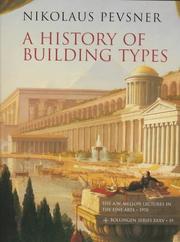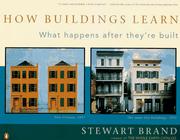| Listing 1 - 10 of 24 | << page >> |
Sort by
|
Multi
ISBN: 9789048650392 9048650399 Year: 2024 Publisher: Brugge: Die Keure,
Abstract | Keywords | Export | Availability | Bookmark
 Loading...
Loading...Choose an application
- Reference Manager
- EndNote
- RefWorks (Direct export to RefWorks)
“‘Een herculische opdracht! Een faraonisch project!’, heb ik dikwijls gezegd toen ik het over dit boek had en dat is inderdaad geen overdrijving. Het zal meer dan twee jaar hard labeur hebben gekost om het boek finaal boven de doopvont te kunnen houden en het eerste exemplaar ervan van de persen te zien rollen. Waarom al die moeite? Omdat een allesomvattend boek, geschreven vanuit een praktische invalshoek, in de eerste plaats bestemd voor de architect en de ir.-architect, maar ook voor al diegenen die met bouw- en infrastructuurprojecten in aanraking komen (ingenieurs, advocaten, rechters, bedrijfsjuristen, verzekeraars, makelaars, enz.), nodig en nuttig is in een wereld die exponentieel snel evolueert.” (uit het Woord vooraf van editor D. De Buyst) In dit boek wordt door een schare specialisten met de nodige diepgang ingegaan op de meest diverse facetten van de taak, het statuut, de aansprakelijkheid en de deontologie van de (ingenieur-)architect. De heldere structuur, de gedetailleerde inhoudstafel en het trefwoordenregister vormen een belangrijke leidraad bij het consulteren van dit lijvige naslagwerk.
Professional ethics. Deontology --- Private law --- Architecture --- Belgium --- Architectes --- Ingénieurs --- Responsabilité du fait des bâtiments --- Responsabilité professionnelle --- Déontologie --- Statut juridique --- Belgique

ISBN: 0691018294 9780691018294 0691099049 0691252750 Year: 1976 Volume: 19 35 Publisher: Princeton (N.J.) : Princeton university press,
Abstract | Keywords | Export | Availability | Bookmark
 Loading...
Loading...Choose an application
- Reference Manager
- EndNote
- RefWorks (Direct export to RefWorks)
721 --- Architectuur types geschiedenis --- 72(091) --- Gebouwen (typologie) --- Gebouwen (architectuur) --- Architectuur geschiedenis --- typology --- architectural history --- buildings [structures] --- Bâtiments publics --- Public buildings. --- Bâtiments publics --- Public buildings --- History --- Architecture --- architectuur --- history [discipline] --- geschiedenis --- architecture [discipline] --- Architectuur ; types ; geschiedenis --- Architectuur ; geschiedenis
Book

ISBN: 9789492567222 Year: 2021 Publisher: Antwerpen Vlaams Architecteninstituut
Abstract | Keywords | Export | Availability | Bookmark
 Loading...
Loading...Choose an application
- Reference Manager
- EndNote
- RefWorks (Direct export to RefWorks)
Sinds 1999 heeft Vlaanderen een Bouwmeester. Die adviseert publieke opdrachtgevers met het doel de kwaliteit van de architectuur en de gebouwde omgeving te bevorderen. Een van de methodes die daartoe worden ingezet, is de Open Oproep. In een reeks essays wordt hier, vanuit verschillende invalshoeken, belicht waarom deze invloedrijke ‘wedstrijd’ net geen architectuurwedstrijd wil zijn, en tegelijk veel meer is. Baande architectuurkritiek in de jaren ’90 mee de weg voor het bouwmeesterschap en de Open Oproep? Ligt de sleutel tot kwaliteit in slimme processen? Wat is een ‘sterke’ publieke opdrachtgever in een democratisch bestel? Wat doet de Vlaamse Bouwmeester en wat heeft de Open Oproep in twintig jaar tijd teweeggebracht? Wat betekenen de afzonderlijke projecten in hun bredere ruimtelijke context? Kunnen architecten met singuliere ontwerpen tegemoetkomen aan een collectief verlangen? Hoe spoort de Open Oproep met de verbreding van de architectuurpraktijk en de evoluerende wedstrijdcultuur? Acht auteurs blikken terug op twee decennia architectuur in publieke opdracht en reiken actuele reflecties aan.
Public buildings --- Architecture --- 72.092(493) --- Team Vlaams Bouwmeester --- Architectuurwedstrijden ; België --- open competitions --- 72.01 --- 72.072 --- België --- Vlaanderen --- Architectuur (theorie) --- Architectuur (kritiek) --- Wedstrijden (architectuur) --- Bâtiments publics --- History --- Histoire --- architectuur, België --- Flanders

ISBN: 9780140139969 0670835153 0140139966 Year: 1995 Publisher: New York (N.Y.) : Penguin books,
Abstract | Keywords | Export | Availability | Bookmark
 Loading...
Loading...Choose an application
- Reference Manager
- EndNote
- RefWorks (Direct export to RefWorks)
Les constructions ont souvent été étudiées en rapport avec l'espace, mais jamais auparavant en rapport avec le temps. Ce livre est une nouvelle synthèse maîtresse qui propose une meilleure adaptation quand l'habitat est constamment affiné et entretenu par ses occupants
bygningers udvikling, historie --- buildings [structures] --- use --- Architecture --- architecture [object genre] --- Développement durable --- Entretien des bâtiments --- Maintenance --- Reconversion de bâtiment --- Réhabilitation de bâtiment --- Rénovation architecturale --- Buildings --- Human factors --- Performance --- Utilization --- Facteurs humains --- 72.025 --- 72.025.2 --- 72.059 --- Verbouwingen --- Reconversie (architectuur) --- Herbestemming (architectuur) --- Aanbouwen --- Uitbreidingen --- Human factors. --- Performance. --- Utilization. --- Architecture - Human factors --- Buildings - Performance --- Buildings - Utilization
Book
ISSN: ISSN ISBN: 9782884742610 2884742611 Year: 2012 Publisher: [Gollion]: Infolio,
Abstract | Keywords | Export | Availability | Bookmark
 Loading...
Loading...Choose an application
- Reference Manager
- EndNote
- RefWorks (Direct export to RefWorks)
Présentation de l'étude pour la sauvegarde et la rénovation de la cité-satellite du Lignon à Genève (Georges Addor, Dominique Julliard, Louis Payot, Jacques Bolliger architectes) construite entre 1963 et 1971 et considérée comme la plus spectaculaire opération de logements de l'après-guerre en Suisse. Grâce au laboratoire des Techniques et de la Sauvegarde de l'Architecture Moderne de l'Ecole Polytechnique Fédérale de Lausanne (EPFL), la conciliation entre conservation et amélioration thermique des 125.000 mètres carrés d'enveloppes du mur rideau (curtain-wall) du Lignon a été rendue possible. En termes de méthode, mais également par rapport aux résultats obtenus, cette expérience pilote pourrait constituer un précieux précèdent, à appliquer à un corpus d'objets similaires, y compris sur le patrimoine contemporain diffus. L'étude est accompagnée d'une lecture historico-critique de la cité du Lignon, soutenue par une riche iconographie d'archives et nourrie par les témoignages des acteurs du projet d'origine. [d'après l'éditeur]
Architecture --- Apartment houses --- Suburbs --- Immeubles d'habitation --- Banlieues --- History --- Conservation and restoration --- Histoire --- Conservation et restauration --- Geneva (Switzerland) --- Genève (Suisse) --- Buildings, structures, etc. --- Constructions --- Switzerland --- Bilan énergétique --- Isolation thermique --- Logement individuel groupé --- Entretien des bâtiments --- Patrimoine architectural --- Mur rideau --- Grand ensemble --- Addor, Georges --- Julliard, Dominique --- Payot, Louis --- Bolliger, Jacques --- Genève (Suisse) --- Cité du Lignon (Genève) --- Addor, Georges, --- Vernier (Suisse) --- Cité du Lignon.
Book

ISBN: 9789492567239 9492567237 Year: 2021 Publisher: Antwerp Flanders Architecture Institute
Abstract | Keywords | Export | Availability | Bookmark
 Loading...
Loading...Choose an application
- Reference Manager
- EndNote
- RefWorks (Direct export to RefWorks)
Flanders has had a Government Architect since 1999. The Government Architect advises public commissioning authorities with the aim of promoting the quality of architecture and the built environment. One of the methods used for this purpose is the Open Call. In the essays in this book, eight authors discuss, from different perspectives, why this influential ‘competition’ is not quite an architecture competition while at the same time being much more. Did architectural criticism in the 1990s help to pave the way for the Government Architect position and the Open Call? Does the key to quality lie in smart procedures? What is a ‘strong’ public commissioner in a democratic system? What does the Flemish Government Architect do and what has the Open Call achieved over the past twenty years? What do the distinct projects mean in their broader spatial context? Can architects satisfy a collective desire with singular designs? To what extent is the Open Call in line with the broadening of the practice of architecture and the evolving competition culture? Looking back on two decades of public commissions, this book presents current reflections on these issues.
Public buildings --- Construction contracts --- Bâtiments publics --- Marchés de travaux publics --- History --- Histoire --- 72.092(493) --- Team Vlaams Bouwmeester --- Architectuurwedstrijden ; België --- Architecture --- open competitions --- Architecture and state --- Competitions --- Concours --- Politique gouvernementale --- 72.01 --- 72.072 --- België --- Vlaanderen --- Architectuur (theorie) --- Architectuur (kritiek) --- Wedstrijden (architectuur) --- architecture [discipline] --- architectuur, België --- Flanders
Multi
ISBN: 9783035625035 9783035618280 3035618283 Year: 2021 Publisher: Basel: Birkhäuser,
Abstract | Keywords | Export | Availability | Bookmark
 Loading...
Loading...Choose an application
- Reference Manager
- EndNote
- RefWorks (Direct export to RefWorks)
Adaptive reuse is a design practice where changes in the building structure go along with new programs and functions. Many concerns of the day that are the hallmark of current social discourse can equally be communicated through the vocabulary of design and reuse. Six common themes mirroring those of society in the new millennium are discernable in the current adaptive reuse practice: appropriation, ecology, equity, memory & redemption, identity and authenticity. Selected articles from the IntAR Interventions and Adaptive Reuse Journal of the last ten years speak to the social issues of the recent decade. The introductory essay positions shifting norms of working from home or remote learning in the light of their revision through adaptive reuse, for example the post-pandemic repercussions on office towers and the classroom.
Buildings --- Architecture and society. --- Architecture --- Constructions --- Architecture et société --- Remodeling for other use. --- Conservation and restoration. --- Reconversion --- Conservation et restauration --- Reconversion (architecture) --- Architecture, Modern --- Remodeling for other use --- Conservation and restoration --- Pictorial works. --- adaptive reuse --- Reconversion de bâtiments --- Reconversion de sites --- Ecologie
Book
ISBN: 9789490322526 9490322520 Year: 2016 Publisher: Heijningen: Jap Sam Books,
Abstract | Keywords | Export | Availability | Bookmark
 Loading...
Loading...Choose an application
- Reference Manager
- EndNote
- RefWorks (Direct export to RefWorks)
Analyse de l'espace public et de l’espace architectural au travers de six thèmes : le palais, le jardin, la ruine, l'abri, la "machine urbaine" et la circulation.
Public buildings --- public spaces --- interior architecture [object genre] --- Public architecture --- Interior architecture --- Interior decoration --- Space (Architecture) --- Design and construction. --- Decoration. --- Social aspects. --- Psychological aspects. --- architectuur --- Architecture --- architectuurtheorie --- Bâtiments publics --- Espace (Architecture) --- Conception et construction --- Aspect psychologique --- Architecture publique --- Architecture intérieure --- Décoration intérieure --- Designs and plans. --- Décoration. --- Dessins et plans --- Aspect social --- Perception de l'espace --- Espace public --- Espace architectural --- architecture [discipline] --- interior spaces [spaces by location]

ISBN: 1856692671 3823855654 9781856692670 Year: 2001 Publisher: London: Laurence King,
Abstract | Keywords | Export | Availability | Bookmark
 Loading...
Loading...Choose an application
- Reference Manager
- EndNote
- RefWorks (Direct export to RefWorks)
public buildings [governmental buildings] --- Politics --- Public buildings --- democracies --- Architecture --- Capitols --- Public architecture. --- Bâtiments publics --- Edifices parlementaires --- Architecture publique --- #A0212A --- 214 Parlement --- 725.1 --- 725.11 --- Westminster --- Schotland --- Commonwealth --- Parlementsgebouwen --- Bâtiments publics --- 626 Bouwkunst --- 213 Democratie --- 72 --- Engeland --- Wales --- Europa --- Openbare gebouwen --- Architectuur --- Public architecture --- Architecture, Public --- Civic architecture --- Government buildings --- Buildings --- Public works --- Civic centers --- Design and construction&delete& --- History --- Design and construction --- History. --- Bâtiment administratif --- Bâtiment public --- Histoire --- Histoire de l'architecture --- Politique --- Ecosse --- Design and construction. --- Conception et construction
Book
ISBN: 0262335360 0262335352 9780262335355 9780262034975 0262034972 9780262335362 9780262535267 0262535262 Year: 2016 Publisher: Cambridge, MA : The MIT Press,
Abstract | Keywords | Export | Availability | Bookmark
 Loading...
Loading...Choose an application
- Reference Manager
- EndNote
- RefWorks (Direct export to RefWorks)
An inventive examination of a crucial but neglected aspect of architecture, by an architect writing to architects.
Architecture --- Buildings --- Edifices --- Halls --- Structures --- Human factors in architecture --- Human engineering --- Architecture and society --- Human factors. --- Maintenance and repair --- Environmental engineering --- Maintenance --- Miscellanea. --- ARCHITECTURE/Architectural Theory & Criticism --- ARCHITECTURE/Architectural History/Contemporary Architecture --- Constructions --- Miscellanea --- Facteurs humains --- Entretien --- Miscellanées --- 72.025 --- Monumentenzorg --- Restauratie (architectuur) --- Renovatie (architectuur) --- Design architectural --- Design architectural. --- Facteurs humains. --- Entretien. --- Entretien des bâtiments --- Processus de conception --- Art --- outdoor sculpture --- maintenance --- architecture [object genre] --- preserving --- architectural conservation --- Built environment
| Listing 1 - 10 of 24 | << page >> |
Sort by
|

 Search
Search Feedback
Feedback About UniCat
About UniCat  Help
Help News
News